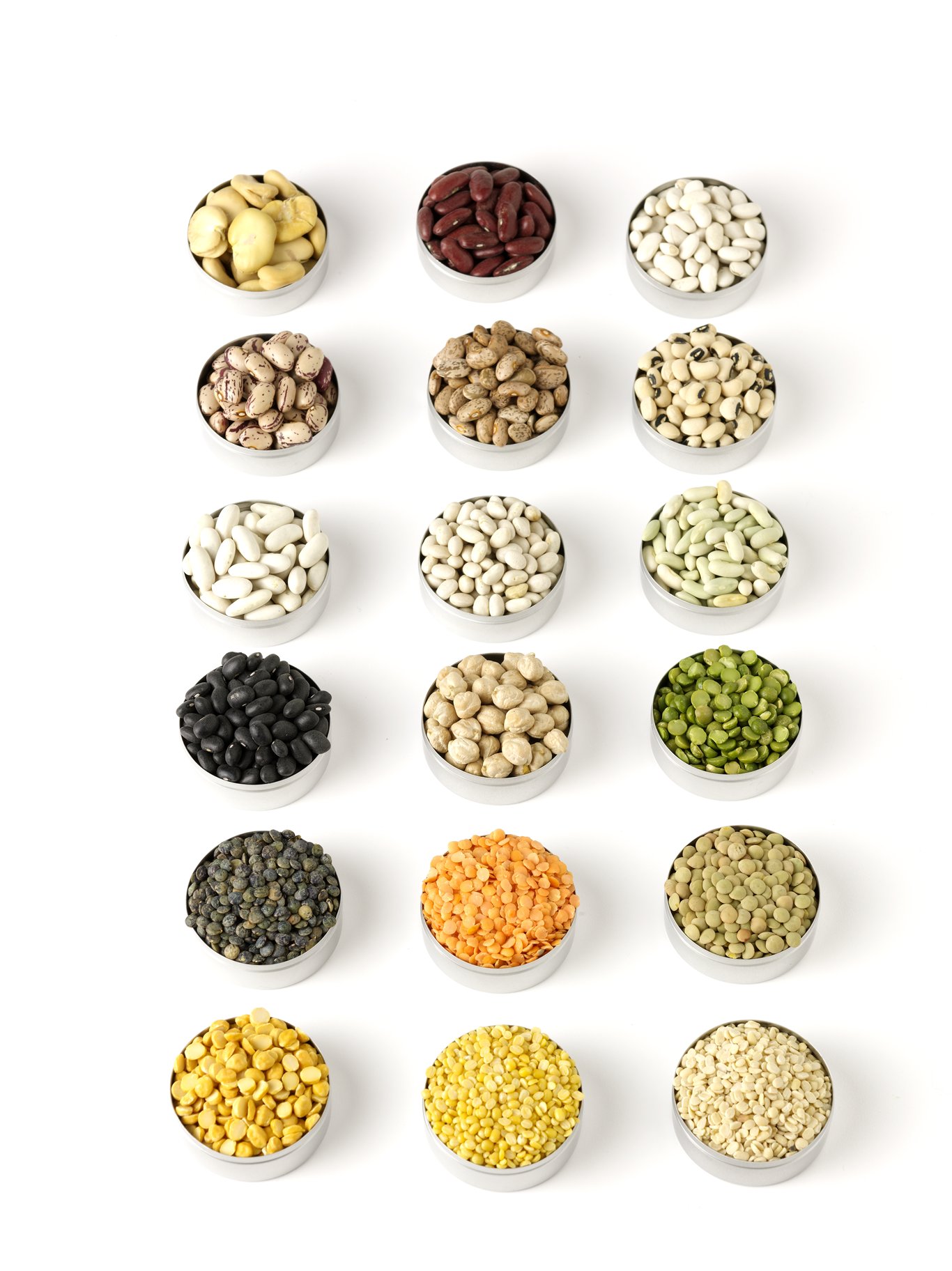
It’s soups and stews season and we often see recipes that call for cooked beans. If you are in a rush, canned beans are a convenient way to get beans into your favorite dish, but we guarantee that beans you cook yourself will have a better flavor and texture. Beans, peas, and lentils are not difficult to cook, although some of them require a bit of advance planning.
First, you want to sort and rinse your legumes. Pour them onto a baking sheet and, working methodically from one end to the other, carefully soft through them, removing discolored or misshapen piece and the occasional rock. Pour the sorted beans into a bowl filled with cold water. Stir them once or twice. Let the beans settle and then removed and discard any that float to the surface. Drain the remaining legumes into a colander and rinse them well with cold running water.
Second, you want to soak your legumes. There are two methods you can take: the long soak or the short soak.
- For the long soak method, place with your sorted and rinsed legumes in a large bowl, add enough cool water to cover them by a few inches, about four times the volume of water to beans. Transfer the bowl to the refrigerator and soak for 4 – 12 hours depending on the legume. Larger legumes like chickpeas and fava beans need to soak for at least 12 hours. Smaller beans like black beans, lima beans, pinto beans and dry peas need to soak for at least 4 hours. And some legumes do not require soaking at all, like black-eyed peas, lentils and split peas.
- For the short soak method, place with your sorted and rinsed legumes in a pot and add enough water to cover by a few inches and bring the water to a simmer. Remove the pot from the heat, cover, and let the legumes steep for 1 hour.
Once you’ve sorted, rinsed, and soaked your legumes, you can start cooking them!
Drain the soaked legumes, place them in a large pot and add enough water to cover the beans by about 2 inches. Bring the liquid to a full boil and reduce the heat to a simmer. Stir the beans occasionally as they cook, and add more liquid if the level starts to drop. Once the beans are tender, you can start adding seasonings, otherwise they can toughen the skins and not allowing them to get soft. Simmer the beans gently until tender enough to mash easily. To check for doneness, either bite into a bean or see if you can mash it easily. If the inside of the bean is fully, it will look creamy, almost like a puree. If it isn’t completely done, the inside may look white and granular.
Now you can add your cooked beans to any soup or stew or mash them up for a bean burger!
